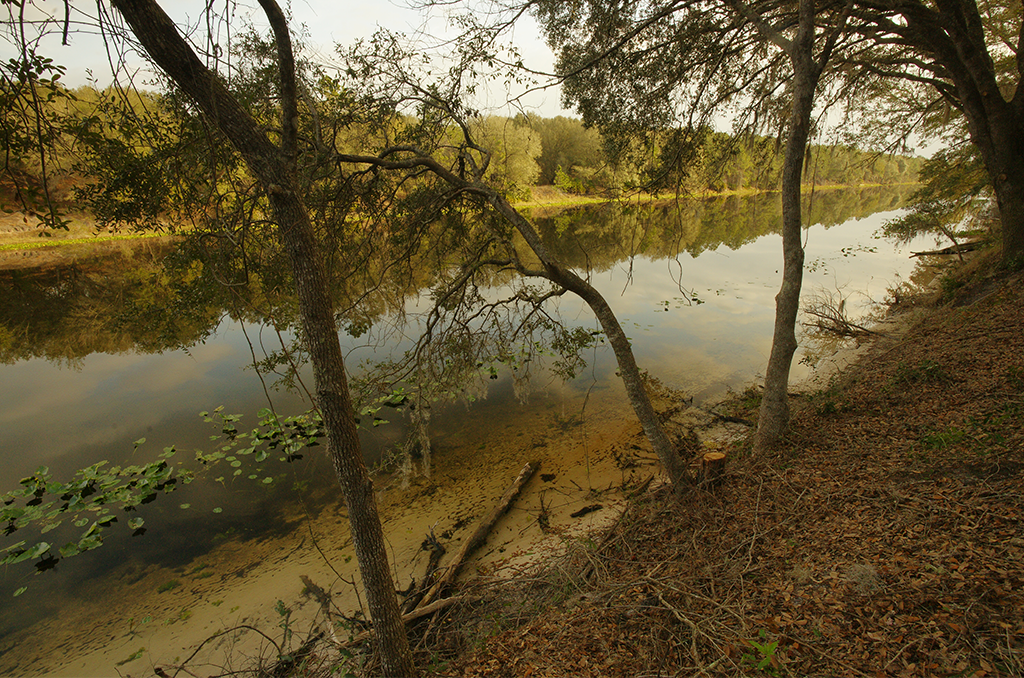Cross Florida Barge Canal – Courtesy: Shutterstock – Image by Fsendek
The Marjorie Harris Carr Cross Florida Greenway follows the same path as the abandoned Cross Florida Barge Canal. Despite never reaching completion, the tremendous public works project has a long history.
Had it been finished, the Cross Florida Barge Canal would have spanned all of Central Florida by connecting a patchwork of artificial waterways, rivers, and lakes. The idea of crossing Florida through inland waterways was first raised in 1567 by the founder of Spanish St. Augustine, Pedro Menendez de Aviles.
Even since the beginning days of European colonization, the journey around the cape of Florida was considered extremely dangerous. Pirates, hurricanes, strong currents, and shallow waters doomed many of the ships that made an effort at the lengthy trip.
Hundreds of years before solid plans for the canal took shape, it was in the 19th century when momentum for the canal grew. Businessmen, traders, and slave owners supported the canal’s development because it would make it much easier to sell and ship goods such as timber and cotton between the East Coast and ports on the Gulf of Mexico.
Daniel Webster and John Calhoun petitioned Congress to gather funds for the first survey of a possible route in 1826. Six more studies were then funded between 1829 and 1911. In the end, they all determined that the canal wasn’t the best idea, or at least too expensive and difficult to complete.
The canal project saw a glimmer of hope in the 1930s. President Franklin D. Roosevelt’s New Deal program was a group of programs administered by the federal government that both funded and built several infrastructure projects. The New Deal’s goal was to stimulate the economy and employ workers during the Great Depression. This would occur all while building recreational facilities and infrastructure that benefited the public. Nine Florida state parks were built during the New Deal era by the Civilian Conservation Corps.
Within three years, New Deal funding for the canal had run out. Locals opposed to the project insisted that the canal would disrupt Florida’s waterways and aquifer. National opposition grew in response to numerous claims that the project was of limited value to those outside of Florida and a complete waste of taxpayers’ money.
However, hope for the canal had yet to completely run out. During World War II, German submarines threatened Florida’s shipping lanes and coasts. Congress then modified the former sea-level canal project into a lock and dam shallow-draft canal that goes along the same route as the original sea-level project.
Once the war was over, the rivalry between the United States and the Soviet Union intensified. Canal boosters pointed fingers at the project as an asset to national security, revisiting old arguments in its favor. Construction resumed in 1964, with President Lyndon B. Johnson leading at the groundbreaking in Palatka, Florida.
In the end, the canal was not meant to be. Several brooks prompted a new surge of environmental awareness throughout the 1960s, such as Rachel Carson’s Silent Spring. This prompted even more opposition to the canal as criticism grew regarding the canal’s usefulness and cost. Leading a group called the Florida Defenders of the Environment, American scientist and environmental activist Marjorie Harris Carr drew President Richard Nixon. This led to the issuing of legal challenges to construction. Nixon ended the project in 1971, stopping a long-held but never-realized dream. Congress eventually de-authorized the project in 1990, after several years of legal battles and political momentum.
With only about one-third of the canal complete, the land that had been held for its path sat untouched. So, what’s next for the largest unfinished public works project in history?
Are you interested in Florida’s history? For stories like this and much more: Florida Insider is dedicated to educating, entertaining and informing its readers about everything Florida. Easy to read content at the palm of your hands and covering the stories that matter.
Melissa’s career in writing started more than 20 years ago. Today, she lives in South Florida with her husband and two boys.

